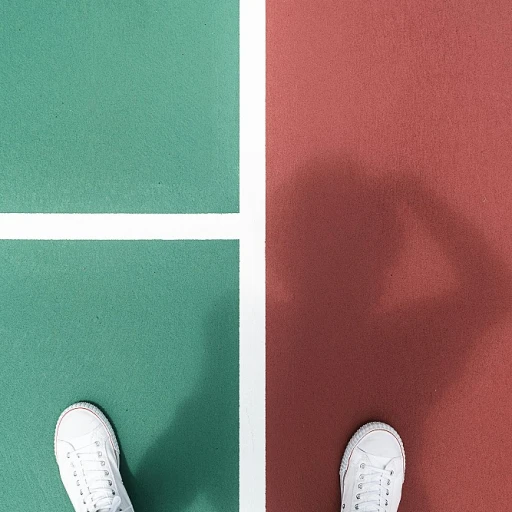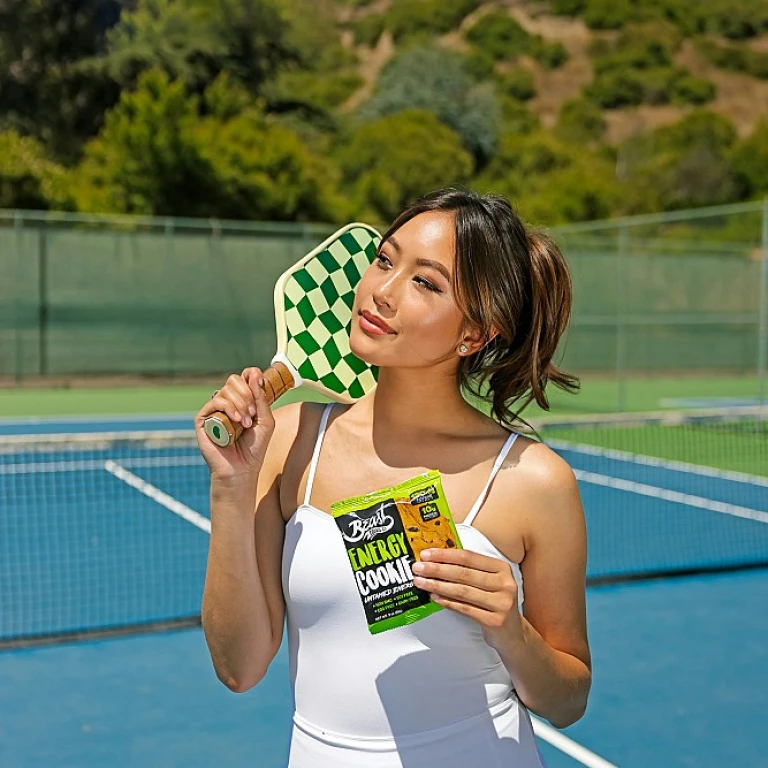Choosing the Right Location
Finding the Perfect Spot for Your Pickleball Court
Choosing the right location is crucial for your pickleball court project. This step sets the foundation for everything else, from court construction to the playing experience. Here's how to ensure you make the best choice:
- Space Requirements: To accommodate a standard pickleball court, you need a space that is at least 30 feet wide and 60 feet long. If planning for a backyard setup, ensure you have enough room for this playing area, including any necessary post tension modifications.
- Surface Considerations: The quality of the surface will significantly impact gameplay. A concrete surface is ideal for its durability and low maintenance. However, it requires a smooth finish to be an adequate playing surface, ensuring the court paint adheres properly.
- Sun Exposure and Wind: Consider the sun’s position throughout the day to avoid players facing glare during play. Additionally, choose an area shielded from strong winds, as this can affect the ball’s flight and the overall playing experience.
- Drainage: Proper drainage is imperative to avoid water accumulation after rain, which could damage the surface. Evaluate the natural slope of your chosen area and plan for adequate drainage solutions during the construction phase.
- Accessibility: Your pickleball court should be easily accessible from your home or facility. Also, consider the location relative to existing structures, such as fences or trees, which could affect the net height and ball play.
This preliminary decision impacts the overall cost and time invested, so it’s essential to weigh all factors before jumping into the construction phase. For a comprehensive breakdown of what this step might cost, check out this
in-depth guide.
Essential Materials and Tools for Your Pickleball Court
Embarking on the journey to construct your own backyard pickleball court is indeed an exciting endeavor. Before diving into the play, it's crucial to gather all the necessary materials and tools that will bring your pickleball vision to life. Having the right equipment on hand ensures a smooth construction process, providing a high-quality playing surface for endless games ahead.
- Concrete and Coating Materials: Start with the essential base material—concrete. This forms the foundation of most pickleball courts. To add durability and color, you'll require an acrylic resurfacer and court paint, such as Picklemaster RTU. These materials ensure the surface stands the test of time while allowing for customization with vibrant court colors.
- Construction Tools and Equipment: To handle the construction and installation steps efficiently, prepare to use equipment like a concrete mixer, trowels, and a roller for applying the resurfacer and paint. Additionally, having a measuring tape is indispensable for marking precise locations. Ensuring these tools are ready will save you time and ensure professional results.
- Net and Court Markers: A net is the heart of any pickleball game. Invest in a high-quality net that satisfies the standard specifications. For court lines, consider using pre-made stencils or masking tape to help accurately mark dimensions, ensuring the playing area is the correct 20 feet wide.
- Leveling and Fill Materials: Depending on your backyard's terrain, you might need to level the surface. Use CLS fill to even out the ground before laying the concrete, providing a stable base for your pickleball court.
Understanding the materials and expenses involved is crucial. For insights into the potential
costs associated with building a pickleball court, dive deeper into financial considerations and budget planning. These help to streamline your construction process and mitigate potential overruns.
Preparing with these essential materials and tools is a worthwhile step, ensuring a resilient and vibrant pickleball court ready for play. With the right groundwork laid, you can move on to designing your court layout and tackling the subsequent steps in your construction venture.
Designing Your Court Layout
Crafting Your Optimal Playing Area
When embarking on the journey of diy pickleball, designing your court layout is essential in creating a functional and enjoyable playing surface. The right design ensures that your backyard pickleball court not only meets your requirements but also adheres to the standards set by usa pickleball. Here's how to design an optimal court layout:
- Understanding Dimensions: A standard pickleball court measures 20 feet wide by 44 feet long. Make sure to allocate ample space beyond the court lines for player movement and safety.
- Determining Direction: When feasible, orient the court north-south to reduce sun interference during playing time.
- Drafting the Layout: Outline your design using tape or temporary court markings. This draft gives a clear preview and allows adjustments before finalizing the court construction.
- Considerations for Surface: If using a concrete base, ensure it's a level and smooth surface as it will be integral to the quality of play. Applying an acrylic resurfacer or picklemaster rtu can enhance the court's durability and playing quality.
- Personalize with Color: To enhance visibility and aesthetics, select high quality court paint to coat the court surface. A two-tone color scheme often highlights the court lines effectively.
For those looking to explore innovative equipment options, the potential of kraken pickleball can offer insights into advanced playing gear. This step is crucial in preparing a court that is both professional and tailored to your specific playing needs.
Preparing the Ground Surface
Preparing the Ground for Your Pickleball Court
Creating a diy pickleball court in your backyard requires attention to detail, especially when it comes to preparing the ground surface. A smooth and level playing surface is crucial for consistent play and safety. Here's how you can begin this critical step in your court construction:
- Clearing and Leveling the Area: Begin by ensuring that the chosen location is clear of any debris, vegetation, or obstacles. Use appropriate tools to level the ground. This may involve removing soil or adding cls fill to achieve a flat surface.
- Choosing the Right Court Base: Most backyard pickleball courts utilize a concrete base for durability and performance. If concrete isn't an option, you can consider using packed gravel or asphalt as alternatives, though these may affect play quality. Keep in mind that courts should be about 44 feet long and 20 feet wide to meet official standards.
- Surface Slope and Drainage: To prevent water accumulation that can damage the court surface, ensure a slight slope for water run-off. Proper drainage must be considered during the court construction process to avoid future maintenance issues.
- Post Tensioning the Concrete: For high-quality and long-lasting results, some opt for post-tensioned concrete. This method helps prevent cracks and ensures stability over time. Including this in your construction may increase the cost but enhances durability.
- Sealing the Surface: After the concrete or alternative base is installed and set, you should apply a coat of acrylic resurfacer. This layer acts as a primer for your playing surface. Using products like picklemaster RTU can help achieve a better finish and provide a suitable base for court paint.
Taking the time to properly prepare the ground will ensure that your pickleball court provides a high-quality surface for fun and fair play. With the foundation set, you'll be ready to proceed with marking out the court lines and adding the vibrant court colors that make playing both enjoyable and challenging.
Installing the Court Markings
Marking Your Playing Legacy
Installing the court markings is a pivotal step in your pickleball court project. Accurate and visible lines are essential for a quality playing experience. Here's how to ensure your court's markings are top-notch:
- Determine the Lines Layout: The standard pickleball court measures 20 feet wide by 44 feet long. Ensure that the sidelines, baselines, and non-volley zones are clearly defined.
- Choose High Quality Materials: Depending on the surface, use acrylic resurfacer to prep the area if necessary. Court paint tailored for sports applications, such as PickleMaster RTU, helps in ensuring longevity and vibrancy of the lines.
- Mark the Lines Before Painting: Use tape to outline the court lines. It helps achieve straight and clean edges. Align tapes to reflect dimensions accurately, considering both the playing and boundary areas.
- Paint the Lines: With court kits, painting lines becomes easier, ensuring precision for the boundaries. Opt for contrasting colors to the court surface to enhance visibility during gameplay.
- Ensure Proper Drying: Depending on weather conditions and surface type such as concrete, ensure the paint fully dries before removing the tape. This guarantees that the lines remain crisp and intact.
- Fill the Gaps: Use an acrylic resurfacer or similar coat to fill any gaps or cracks on your playing surface; this provides a smooth transition and prevents injuries during play.
By taking the time to accurately paint court lines, your pickleball court will not only meet USA Pickleball standards but also provide endless hours of competitive fun in your backyard.
Adding the Finishing Touches
Applying the Final Court Coats
Now that you've laid out the framework and structure for your pickleball court, it's time to apply the final touches. These coatings are essential, not only for aesthetics but also to ensure a smooth, stable playing surface.
The application of acrylic resurfacer is a crucial step. Begin by applying a thick base coat to the court surface. This serves as the perfect foundation to cover any imperfections in the concrete and creates the ideal texture for court paint to adhere. By ensuring that the surface is level, you create a consistent bounce and playing experience. Consider using products like PickleMaster RTU to achieve a high-quality finish.
Painting Court Lines and Adding Color
Once the base coat is dry, the next step involves painting the court lines. Use high-quality court paint and tape to carefully map out the dimensions of your pickleball court. Typically, a pickleball court should measure 20 feet wide by 44 feet long. Make sure to use a contrasting color for the lines to distinguish them clearly against the primary backdrop of the court.
Choosing the right colors for the court is also important. Bright, non-reflective shades ensure visibility and can enhance both the aesthetics and functionality of your backyard pickleball setup.
Installing the Pickleball Net
Finally, implementing a sturdy, regulation-height net is a critical finishing touch. The net should be 36 inches high at the sidelines and 34 inches at the center, ensuring compliance with USA Pickleball guidelines. The net will span the width of the court, securely anchored on both ends.
Incorporating these final touches ensures your DIY pickleball court is not only visually appealing but ready to host excellent games. With all components in place, your newly constructed court will be a centerpiece in your backyard, offering endless opportunities for playing and enjoyment.

